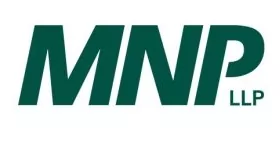Many people in agriculture don't understand that taxes are a sign of prosperity. In an industry that is taught to avoid paying taxes at all costs, the thought of forking over any money to the government, even in years of record profits, is hard to swallow.
Canadian agriculture tax rules allow farmers to defer cash profits and calculate taxable income on a cash basis.
This has resulted in many farms being able to avoid paying tax.
Deferrals work, but they create a tax hangover that can be addressed only in a year of disastrous income.
Counting on a bad year seems ludicrous as a tax strategy, but history has shown this to be the norm rather than the exception, which is why it continues as a solid tax strategy today.
A tax partner of mine used to say, back when personal tax rates were close to 50 percent, that he wished he paid $5 million in taxes because that meant he earned $10 million.
Taxes are a result of being profitable and should be more widely seen as a sign of success.
It does not mean you have to be happy about paying them, but it does mean you are doing something right. A history of paying tax indicates your farm is profitable and routinely making good management decisions that result in profit.
Changing the legal structure of your operation to a partnership, joint venture or company might give you more tools to control taxes and help your succession plan.
New structures can reduce the taxes that are owed by using corporate tax rates or allowing for income splitting with the next generation.
Alternatively, restructuring can provide flexibility if your ultimate goal is to exit the industry.
Gaining access to the multiple capital gains exemptions that are available to the family farm can also be achieved as an additional benefit. It requires significant tax planning, so don't try this on your own.
Don't forget that other benefits, such as increases to your AgriStability margins, occur as your operation continues to be profitable because the program is based on your accrual profit.
Accrual profits are usually larger than your cash profits if you have been taking advantage of deferrals and prepayments of input expense or purchasing inventory.
Yes, I know you have all heard how the changes to AgriStability have made it less attractive, but the last couple of years of great profits in the grain sector have resulted in significant increases to the five-year margin averages.
For example, the old program's 85 percent coverage was $850,000 when applied to a margin of $1 million. Today, the coverage is lower at 70 percent, but the margin is better at $2 million, which yields $1.4 million in coverage.
Beef and hog production has been highly profitable this year. AgriStability will make sense for producers if that continues for a couple of years because it is the only safety net available to protect against a crash.
Remember, AgriStability is a disaster program and you really never want it to pay out because it means you have had a wreck. However, that is exactly when you will need the financial protection it provides. You just might have to wait a while for it.
So as you curse writing that tax cheque and blame your accountant for not working hard enough, remember that no one went broke locking in a profit. As well, make sure you know where profit shows up on your farm by knowing your true costs of production.
I know, I know: spoken like a true accountant.
The content of this article is intended to provide a general guide to the subject matter. Specialist advice should be sought about your specific circumstances.

